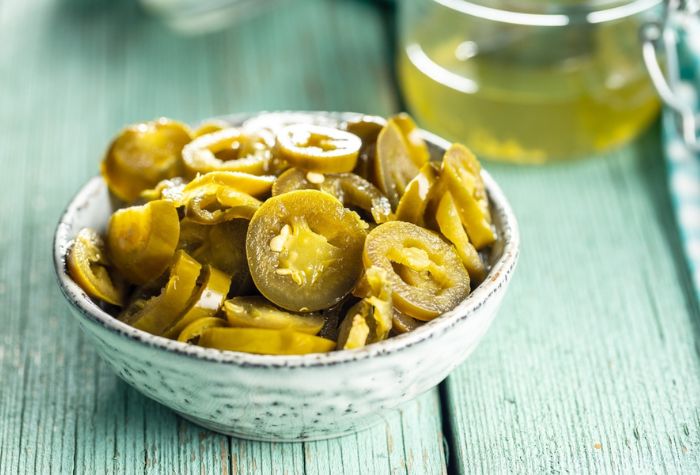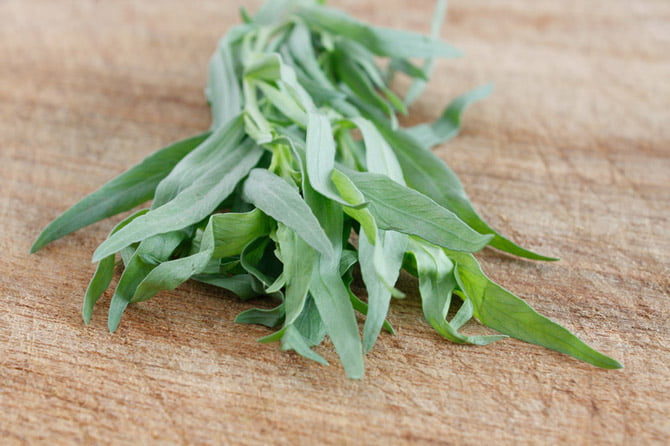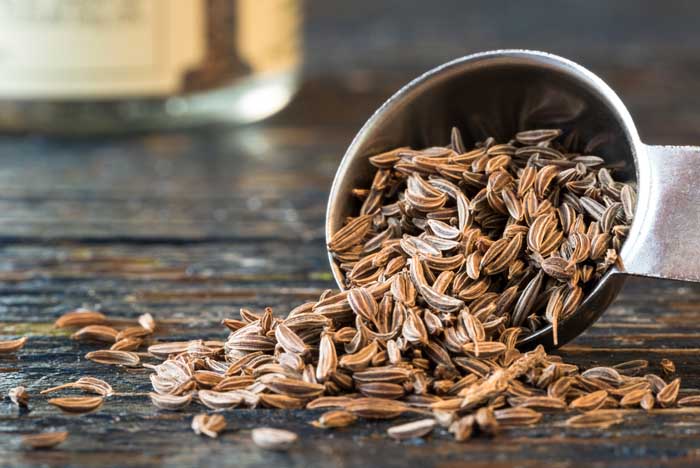Fettuccine and tagliatelle are two types of Italian pasta that are often confused despite different textures and uses. Find out the differences for your next homemade pasta recipe.
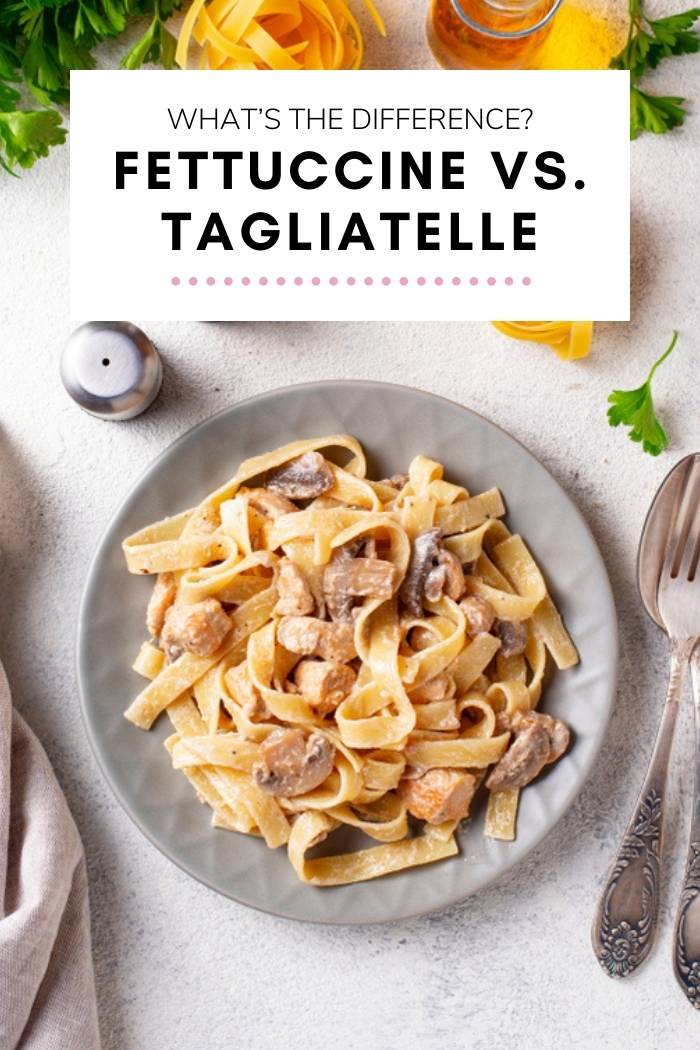
Many people may confuse fettuccine with tagliatelle or vice versa, but they are not the same. The slight variances between the two types of pasta can seem invisible, but they can make a difference in your dish.
Quick Answer
The difference between the two kinds of pasta comes down to their thickness and origin. Fettuccine is a thicker-cut pasta that originated in the regions of Northern Italy. Both kinds of pasta consist of flour and egg, making their flavors identical. But, with their slight variances in size and uses, they are not the same pasta.
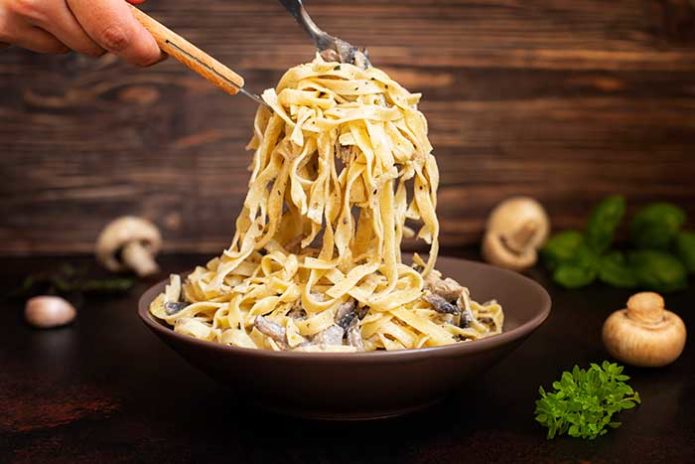
What is Fettuccine?
Fettuccine is one of the most popular kinds of pasta for many different dishes and is hard to think of without thinking of fettuccine alfredo.
A pasta shaped into long, thick-cut ribbons served with heavy meat sauces to offset the thickness of the pasta. The word translates to “small ribbons” and is about a 1/4 inch in width, making it thicker than most long pasta.
Originating in Central Italy, fettuccine rose to popularity through the famous dish Fettuccine Alfredo. Chef Alfredo di Lelio invented it in 1914 for his family and it soon caught on at his restaurant.
Fettuccine vs. Linguini
Linguini is much lighter and thinner than fettuccine. Because of this, fettuccine goes better with heavier sauces, while linguine is perfect for light, healthier sauces. In most recipes, it is acceptable to substitute linguine in place of fettuccine. Just like fettuccine, the pasta consists of egg and flour and tastes the same.
Fettuccine vs. Pappardelle
Fettuccine and pappardelle are the same, except pappardelle is a much wider noodle. It consists of flour and egg, so the only difference is the width of the noodle that is best for carrying heavy meat sauces. They are generally interchangeable in most recipes.
How is Fettuccine Made?
Fettuccine is made with flour and eggs and follows the standard steps that most pasta recipes use.
First, sift all-purpose flour onto a flat counter and create a small well that looks like a little volcano. Then, crack the eggs into the well of the flour mound. Beat the eggs lightly, and then mix the dough.
Knead the dough generously and then let it rest for at least 30 minutes. After it rests, roll it out into sheets and cut into noodles. This is significantly easier with a pasta machine but can be done by hand as well.
Fettuccine Recipes
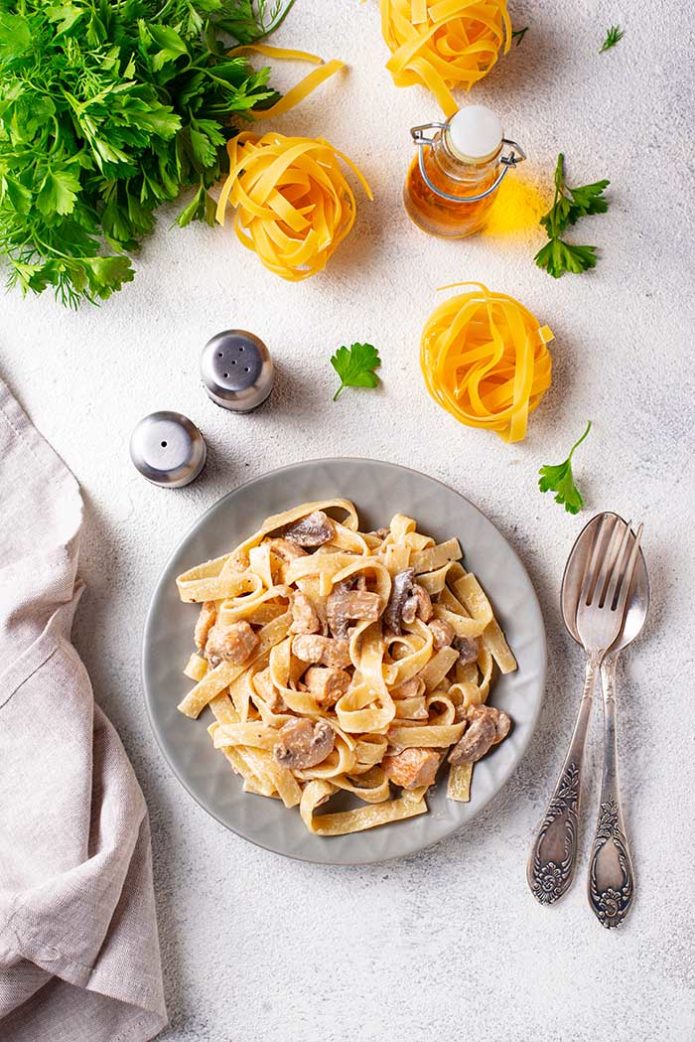
Three different dishes to enjoy fettuccine with!
Broccoli Chicken Alfredo
Broccoli alfredo is a satisfying and traditional Italian dish that highlights the fantastic flavor and texture of fettuccine. Ingredients for this 30-minute alfredo are simple and usually on hand, like parmesan, milk, flour, and butter that come together in a creamy, tasty sauce that everyone loves.
Slow-Cooker Italian Beef Bolognese
The Italian flavors in this bolognese recipe are brilliant and highlight the fettuccine perfectly. Bolognese is an essential Italian recipe that works with all kinds of pasta, not just spaghetti. Combining onion, carrot, celery, garlic, tomatoes, basil, and a healthy splash of red wine results in a filling meal that will bring Italy into your kitchen.
Creamy Mushroom Chicken
Mushroom is well-known for being a great addition to any fettuccine dish, and this easy recipe showcases why they are a match made in heaven. The dish packs a ton of flavor to go with fettuccine using just cremini mushrooms, garlic, cream, chicken, and parsley.
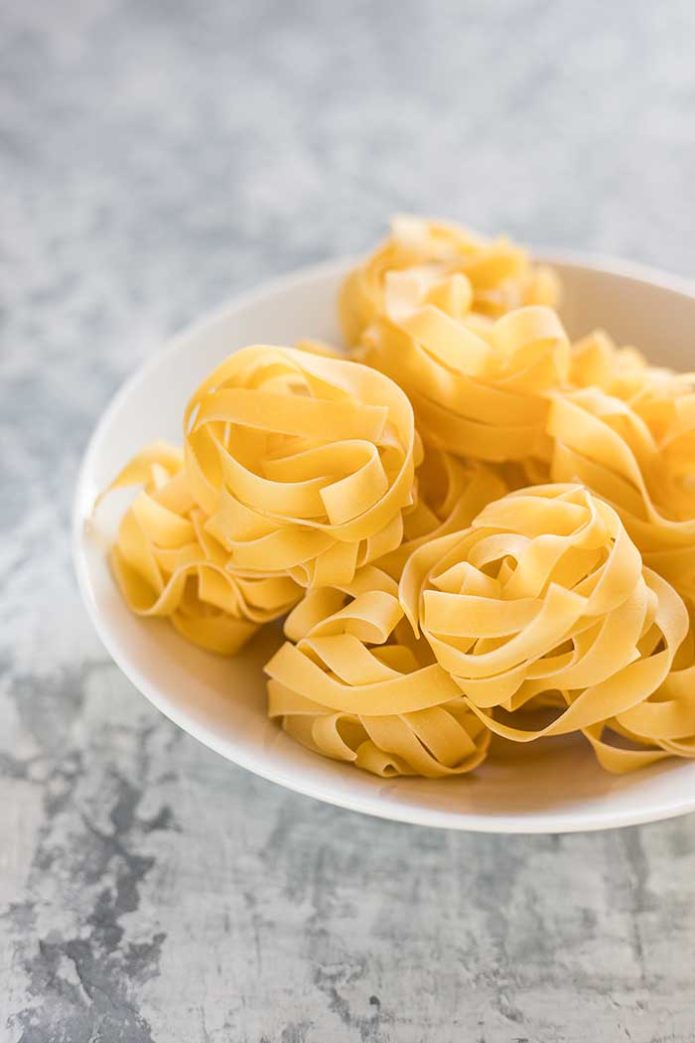
What is Tagliatelle?
Tagliatelle is not quite fettuccine, but they are close cousins. Despite their similarities, they do have the traditional recipes that differentiate them.
Tagliatelle pasta is long, flat ribbons that are about ⅜ inch thick and used for heavy sauces that are chunky or meaty. Although very similar to fettuccine, they do differ slightly in origins.
The legend says tagliatelle was invented in 1487 by Maestro Zafirano in the village of Bentivoglio. He made it for the wedding of a Duke by cutting lasagna sheets into thinner pieces. It has been a popular pasta ever since in Tuscany, Lazio, Umbria, and Le Marche.
Tagliatelle vs. Linguini
Linguini is much thinner in width than tagliatelle and pairs better with light sauces, while the thickness of tagliatelle holds up with heavy sauces. Linguini is thinner than tagliatelle and fettuccine. It is closer to spaghetti but thicker, making it a midway point, but it isn’t as sturdy for handling thick, rich sauces.
Tagliatelle vs. Spaghetti
Spaghetti is the thinnest of all the noodle shapes we’ve discussed. It is excellent for creamy, lighter sauces, but spaghetti also works with meat sauces. It is also made from flour and eggs, making the only difference in the width and thickness of the noodle. Rather than flat ribbons, spaghetti is more of a tubular shape, excellent for silky sauces but not chunky ones.
How is Tagliatelle Made?
Similar to fettuccine, tagliatelle traditionally uses flour and eggs. Many recipes use more egg yolk in tagliatelle than in fettuccine, giving it a richer flavor and making it sturdier.
To make tagliatelle from scratch, begin with sifted flour on a flat surface. Create a mound of flour and make a little divot in the top for your eggs to sit. Crack the eggs and add the egg yolks to the center of the mound. Beat the eggs quickly.
Slowly combine the eggs with the flour working from the inside of the mound to the outside. When the dough comes together, knead it until it is fully incorporated and soft. If the dough is still sticky, add more flour. Let the dough rest for 30 minutes. Then roll it out and cut it into tagliatelle pasta.
Tagliatelle Recipes
These three recipes exemplify the tastiness of tagliatelle!
Braised Short Rib
The use of short rib, celery, carrots, oregano, thyme, Worcestershire, tomatoes, and garlic creates a hearty, outstanding flavor perfect as a comfort meal. This braised beef recipe places tagliatelle right where it belongs, underneath an abundance of meat sauce. Tagliatelle pairs well with tomatoes and meat, making this a quintessential tagliatelle recipe.
Creamy Smoked Salmon & Lemon
The combination of light flavors with a satisfying cream sauce exemplifies how tagliatelle carries sauce like a champion. This salmon recipe achieves its light creaminess by combining creme fraiche, lemon, chives, and parmesan. The sauce is slathered on the salmon and pasta for a tasty meal.
Cremini Mushroom Sauce
Pairing tagliatelle with mushrooms brings out both of their rich flavors, and this light dish perfectly highlights both components. The star ingredients of this recipe are the three different varieties of mushroom, artichoke hearts, fresh thyme, and asiago cheese that all complement the tagliatelle beautifully.

